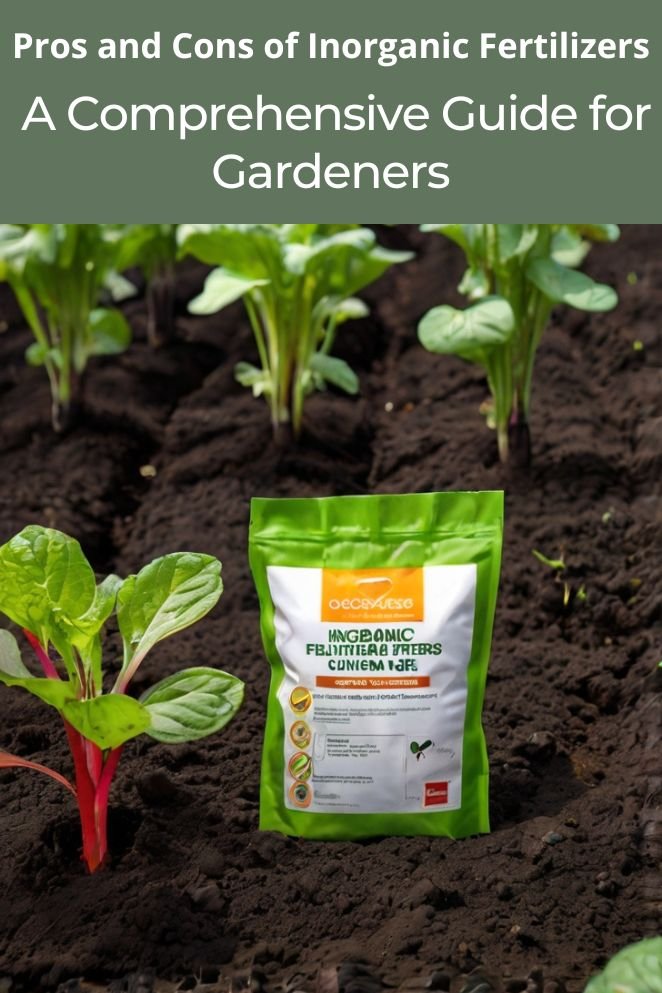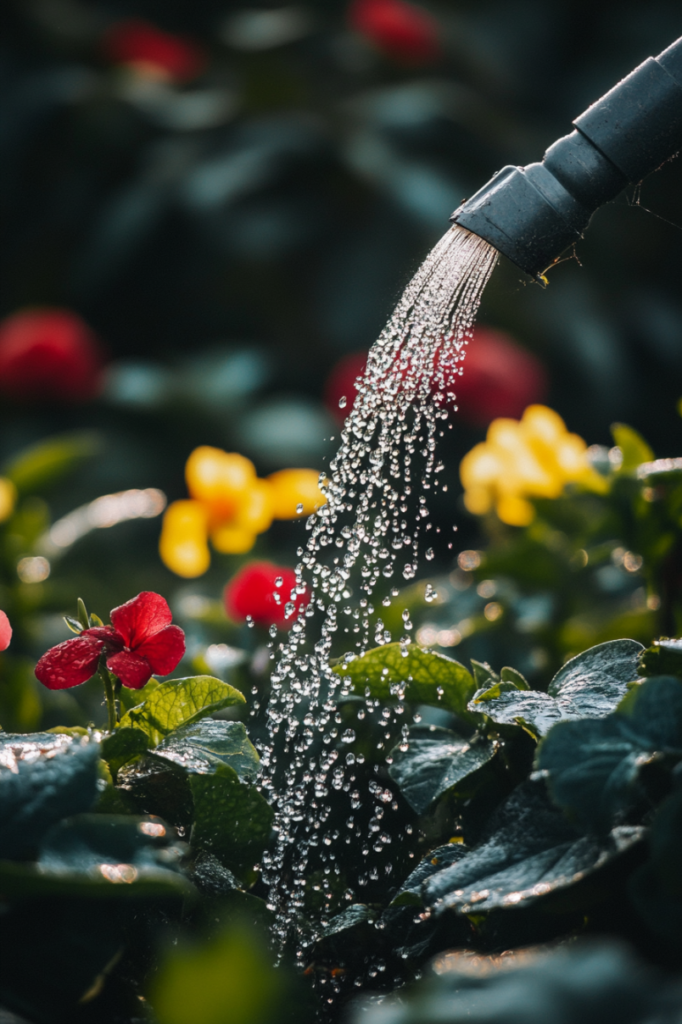
Fertilizers are essential for modern agriculture and gardening, providing plants with the nutrients they need to grow healthy and strong.
Among the various types of fertilizers available, inorganic fertilizers are one of the most widely used due to their immediate effectiveness and ease of application.
However, like all agricultural inputs, they come with both advantages and drawbacks.
Let’s dive into the pros and cons of inorganic fertilizers.
This post will help you understand when and why they might be the right choice for your plants.
About Inorganic Fertilizers
Inorganic fertilizers, often referred to as synthetic or chemical fertilizers, are man-made products designed to provide plants with essential nutrients.
These fertilizers are formulated in laboratories and are typically derived from chemical compounds such as ammonium nitrate, potassium chloride, and superphosphate.
They deliver key nutrients such as nitrogen, phosphorus, and potassium (often referred to as N-P-K) in concentrated forms that plants can absorb immediately.
Inorganic fertilizers are produced to be precise and predictable, making them a popular choice for commercial farming and home gardening alike.
But like anything in agriculture, they have their place, and they also have their downsides.
Characteristic of inorganic fertilizer:
- Synthetic origin: Inorganic fertilizers are manufactured from industrial processes using mineral resources.
- Nutrient-rich: They contain high concentrations of specific nutrients, making them efficient and easy to apply.
- Quick-acting: Inorganic fertilizers are readily available to plants, allowing for rapid nutrient uptake.
- Versatile: They can be used on a wide range of crops and soil types.

- Read also: A Comprehensive Guide: Inorganic vs Organic Fertilizers
- Read also: Nurturing Green Growth: A Deep Dive into Organic Fertilizers
Types of Inorganic Fertilizers
Inorganic fertilizers come in various forms, each designed to deliver specific nutrients to plants.
Understanding the different types can help you choose the right one for your gardening or farming needs.
Here’s a breakdown of the main types of inorganic fertilizers:
Nitrogen based fertilizers
- Ammonium nitrate: A widely used nitrogen fertilizer, ammonium nitrate provides a quick release of nitrogen, making it ideal for crops that need an immediate nutrient boost.
- Urea: Urea is the most commonly used nitrogen fertilizer due to its high nitrogen content (46%). It’s cost-effective and can be used on a variety of crops. However, it must be applied carefully to avoid volatilization (loss of nitrogen as gas).
- Ammonium sulfate: This fertilizer not only supplies nitrogen but also sulfur, which is essential for certain crops. It’s particularly useful in soils that are deficient in sulfur.
Phosphorus based fertilizers
- Superphosphate: Available as single superphosphate (SSP) or triple superphosphate (TSP), this fertilizer is made by treating rock phosphate with sulfuric or phosphoric acid. It provides plants with readily available phosphorus.
- Diammonium phosphate (DAP): DAP is a popular phosphorus fertilizer that also supplies nitrogen. It dissolves easily in water, making phosphorus immediately available to plants, and is commonly used at planting time to encourage root development.
Potassium based fertilizers
- Potassium chloride (Muriate of potash): The most commonly used potassium fertilizer, potassium chloride provides plants with the potassium they need for strong growth. It’s highly soluble in water, making it easy for plants to absorb.
- Potassium sulfate (Sulfate of potash): In addition to potassium, this fertilizer also supplies sulfur. It’s often used in crops that are sensitive to chloride, such as tobacco, potatoes, and some fruits.
Combination fertilizers
- N-P-K blends: These are balanced fertilizers that combine nitrogen, phosphorus, and potassium in various ratios, such as 10-10-10 or 20-20-20. They are designed to provide a comprehensive nutrient solution and are commonly used in general gardening.
- Compound fertilizers: These fertilizers contain two or more nutrients in a single product. For example, a compound fertilizer might provide both nitrogen and potassium, making it convenient for farmers and gardeners who want to simplify their fertilization routine.
Secondary nutrient fertilizers
- Magnesium fertilizers: Kieserite (magnesium sulfate monohydrate) is a popular magnesium-based fertilizer.
- Calcium fertilizers: Calcium nitrate, lime (calcium carbonate), and gypsum (calcium sulfate)
Micronutrient fertilizers
- Zinc sulfate: This fertilizer provides zinc, an essential micronutrient that supports plant growth and development. It’s especially important in soils that are deficient in zinc.
- Iron chelates: Used to correct iron deficiencies, iron chelates are particularly beneficial for acid-loving plants like azaleas and blueberries.

Pros of Using Inorganic Fertilizers
Immediate nutrient availability
One of the biggest advantages of inorganic fertilizers is their ability to deliver nutrients quickly.
Because these fertilizers are already in a form that plants can absorb, they work faster than organic options.
If your plants are showing signs of nutrient deficiency, an inorganic fertilizer can quickly provide the boost they need, often within days of application.
Cost-effective
Inorganic fertilizers are often cheaper than organic fertilizers due to the large-scale manufacturing processes.
This makes them a cost-effective solution, especially for large farms and extensive gardens where nutrient requirements are high.
Their concentrated nature also means you need to apply less product to get the desired effect.
Nutrient-specific
With inorganic fertilizers, you can choose a formula that delivers the exact nutrients your plants require.
Whether you’re looking for a high-nitrogen fertilizer to promote leafy growth or a balanced N-P-K mix for overall plant health, there are a wide variety of inorganic fertilizers that cater to specific plant needs.
This precision can lead to better crop yields and healthier plants.
Consistent results
Because inorganic fertilizers are manufactured with exact specifications, they provide reliable, consistent results.
When applied correctly, you can predict how your plants will respond.
This makes them ideal for commercial agriculture, where consistency is crucial for maximizing yields and profits.
Ease of application
Inorganic fertilizers are easy to apply, especially in comparison to some organic alternatives that require more time and effort to prepare and spread.
They come in convenient forms like granules, powders, or liquids, which can be applied with standard equipment.
This simplicity can save both time and labor costs, particularly for large-scale operations.

Cons of Using Inorganic Fertilizers
Soil health impact
Over-reliance on inorganic fertilizers can have detrimental effects on soil health.
While they provide essential nutrients, they don’t contribute to the organic matter in the soil, which is crucial for long-term soil structure and fertility.
Repeated use can lead to soil degradation, including reduced water retention and decreased soil microbial activity, making the soil less productive over time.
Environmental concerns
Inorganic fertilizers are often linked to environmental issues.
Excess nutrients, particularly nitrogen and phosphorus, can leach into water bodies, causing pollution and contributing to problems like algal blooms and dead zones.
These environmental impacts are particularly concerning in areas where fertilizer runoff is a common problem.
Risk of over-fertilization
Because inorganic fertilizers are concentrated and fast-acting, there is a higher risk of over-fertilization, which can harm plants.
Over-application can lead to nutrient burn, where plants take up more nutrients than they need, leading to stunted growth, leaf discoloration, and even plant death.
Proper application rates are critical, but mistakes can easily be made, especially by beginners.
Energy-intensive production
The production of inorganic fertilizers is energy-intensive and relies heavily on non-renewable resources, such as natural gas.
This contributes to greenhouse gas emissions and increases the overall carbon footprint of agriculture.
As concerns about climate change grow, the environmental cost of inorganic fertilizer production is becoming a more significant issue.
Limited soil enrichment
While inorganic fertilizers provide plants with nutrients, they don’t improve the soil’s organic content or promote long-term soil health.
Organic matter is vital for maintaining good soil structure, encouraging beneficial microorganisms, and improving water retention.
In contrast, inorganic fertilizers offer a short-term solution but don’t contribute to the soil’s long-term sustainability.

- Read also: Nourishing Naturally: How to Make Organic Fertilizers at Home
- Read also: Nourishing Growth: A Guide to Composting for Vegetable Gardens
Conclusion
Inorganic fertilizers have their advantages, particularly in terms of fast nutrient delivery, cost-effectiveness, and ease of use.
However, their drawbacks, such as potential environmental harm and negative effects on soil health, can’t be ignored.
For many growers, the best approach may be a balanced one—using inorganic fertilizers when necessary for quick results but also incorporating organic practices to maintain healthy soil in the long run.
Before deciding on inorganic fertilizers, it’s important to weigh the pros and cons carefully, considering both your immediate needs and the long-term health of your garden or farm.
By doing so, you’ll be better equipped to make informed decisions that benefit both your plants and the environment.
FAQs
The frequency of application depends on the type of fertilizer and the specific needs of your plants. Generally, inorganic fertilizers are applied less frequently than organic options due to their concentrated nature, but always follow the instructions on the packaging for best results.
Yes, combining inorganic and organic fertilizers can offer the best of both worlds. Inorganic fertilizers provide immediate nutrients, while organic fertilizers improve soil health and contribute to long-term sustainability.



